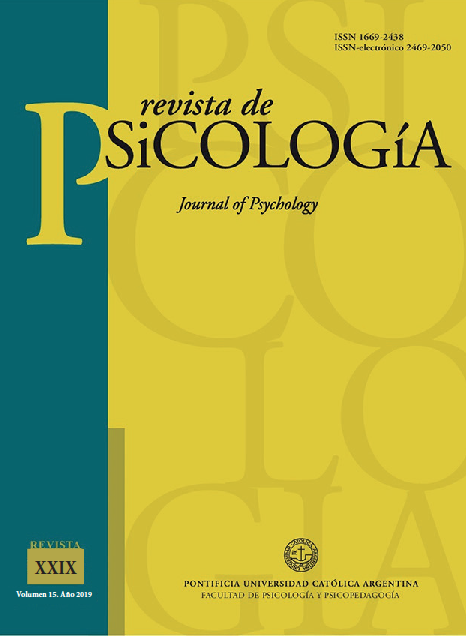Driving and Anger: from one risk to another
Keywords:
Aggressive behaviors, Risks, Driving Anger Scale, Driving Behavior Questionnaire, young driversAbstract
Anger is a basic emotion and one of the most studied in Psychology, specially its relationship to aggression and hostility. In the field of Psychology applied to transportation, although recently considered, the studies about the impact of anger on driving behavior had increased exponentially over the last few years. This research showed that controlling anger and hostility on the wheel may have important implications in accident prevention and this is the main goal of this work. In particular, we address our work to ask several questions: which situations in driving leads to anger and hostility? Can we identify the different kinds of drivers more prone to anger in the type of driving situations proposed by the Driving Anger Scale? Can we establish some links among driving anger, the different ways of expressing that anger, traffic violations and self-reported accidents? So, a sample of 1159 young drivers, ranging from 18 to 25 years old answered the French adaptation of the Driving Anger Scale (Deffenbacher et al., 1994) and a set of items from the Driving Behavior Questionnaire (Reason, Manstead, Stradling, Baxter & Campbell, 1990). The results of the study will be presented in this article. In parallel, a qualitative study is underway (interviews with young drivers). This will allow us to get more detailed information about exposure, near-accidents, feelings of anger, aggressive behaviors and situations which may lead to hostile actions and emotions.Downloads
References
Averill, J. R. (1982). Anger and aggression. An essay on emotion. New York: Springer-Verlag.
Berkowitz, L. (1969). Simple views of aggression. American Scientist, 57, 372-388.
Berkowitz, L. (1989), Frustration-aggression hypothesis: Examination and reformulation. Psychological Bulletin, 106, 59-73.
Berkowitz, L. (1990). On the formation and regulations of anger and aggression: A cognitive-neoassociationistic analysis. American Psychologist, 45, 494-503.
Berkowitz, L. & Troccoli, B. T. (1990). Feelings, direction of attention, and expressed evaluations of others. Cognition and Emotion, 4, 305-325.
Buss, A. (1961). The psychology of Aggression. New York: John Wiley & Sons, Inc.
Darwin, C. (1972). The Expression of the Emotions in Man and Animals, London: John Murray. Spanish version, (1984). La expresión de las emociones en los animales y en el hombre, Madrid: Alianza Editorial.
Deffenbacher, J. L., Oetting, E. R., & Lynch, R. S. (1994). Development of a driving anger scale. Psychological Reports, 74, 83-91.
Deffenbacher, J. L., Lynch, R. S., Oetting, E. R., & Swaim, R. C. (2002). The driving anger expression inventory: A measure of how people express their anger on the road. Behaviour Research and Therapy, 40, 717-737.
Delhomme, P. & Villieux, A. (2005). Adaptation française de l’échelle de colère au volant DAS : quels liens entre colère éprouvée au volant, infractions et accidents de la route déclarés par de jeunes automobilistes ? Revue européenne de psychologie appliquée, 55, 187-205.
Egido, A., & Egea-Caparrós, D. A. (2017). Colère et transgressions de genre des règles usuelles de conduit. In S.Gaymard & T.Tiplica (Eds.), Sécurité routière : Etat des lieux et initiatives dans le monde (pp. 251-260). Paris : L’Harmattan.
Gaymard, S., Boucher, V., Nzobounsana, V., Greffier, F., & Fournela, F. (2013). La perception des piétons par les conducteurs : corrélations entre les données d’un œil électronique et le verbatim des conducteurs/ Drivers’ perception of pedestrians : correlations between the data of an electronic eye and drivers’ verbatim. Canadian Journal of Behavioural Science/Revue canadienne des sciences du comportement, 45(2), 124-137. doi : 10.1037/a0025789
Gomez, D., Egido, A., Saburido, X. & Pulido, M. T. (1996). El STAXI: un nuevo instrumento de evaluación de la ira. In D. Gómez & X. L. Saburido (eds.). Salud y Prevención: Nuevas aportaciones desde la Evaluación Psicológica (pp. 653-685). Santiago de Compostela: Universidad de Santiago de Compostela.
Hennessy, D.A., & and D. L. Wiesenthal, D.L. (1997). The relationship between traffic congestion, driver stress and direct versus indirect coping behaviours. Ergonomics, 40(3), 348–361.
James, L., & Nahl, D. (2000). Road Rage and Agressive Driving. NY, USA: Prometheus Books, Amherst.
Lazarus, R. S. (1991). Emotion and adaptation. New York: Oxford University Press.
Lazarus, R. S. (1994). The stable and the unstable in emotion. In P. Ekman, & R. Davidson (Eds.), The Nature of Emotion: Fundamental Questions (pp. 79-85). New York: Oxford University Press.
Lazarus, R. S. & Lazarus, B.N. (1994). Passion and reason. Making sense of our emotions. New York: Oxford University Press.
McCleary, R. A. & Moore, R.Y. (1965). Subcortical Mechanism of Behavior. New York: Basic Books.
Megargee, E. I. & Hookanson, J. E. (1970.(Eds). The dynamics of aggression. New York: Harper & Row.
Meite, A., Tieffi, H.G.R, & Gaymard, S. (2018). La colère au volant dans les pays à faibles et moyens revenus : cas de la Côte D’Ivoire. In J. Collange, E. Loarer & T. Lubart (Eds.), La psychologie différentielle au 21ème siècle : nouvelles modélisations et applications (pp.61-66). eBookfab, laboratoire Lati.
Özkan, T., & Lajunen, T. (2005). Why are there sex differences in risky driving? the relationship between sex and gender-role on aggressive driving, traffic offences, and accident involvement among young turkish drivers. Aggressive Behavior, 31(6), 547–558. http://doi.org/10.1002/ab.20062
Reason, J., Manstead, A., Stradling, S., Baxter, J., & Campbell, K. (1990). Errors and violations on the roads: A real distinction? Ergonomics, 33, 1315−1332.
Toch, H., (1969). Violent men. Chicago: Aldine.
Downloads
Published
How to Cite
Issue
Section
License















